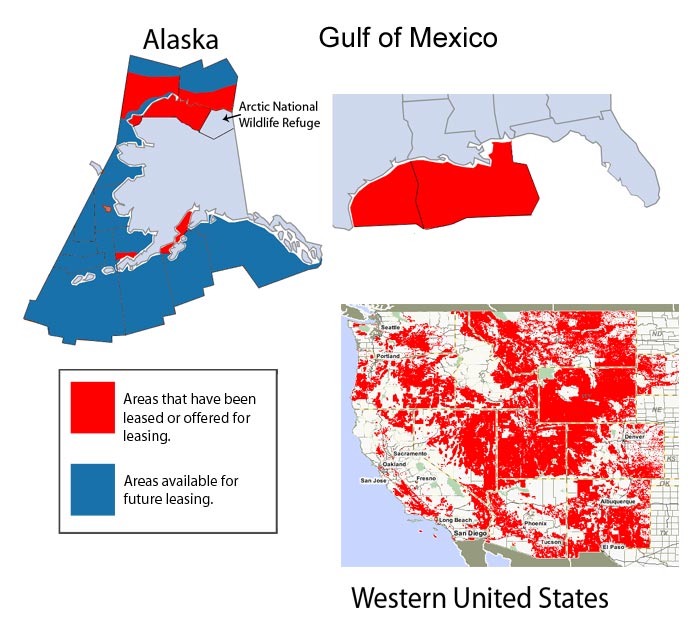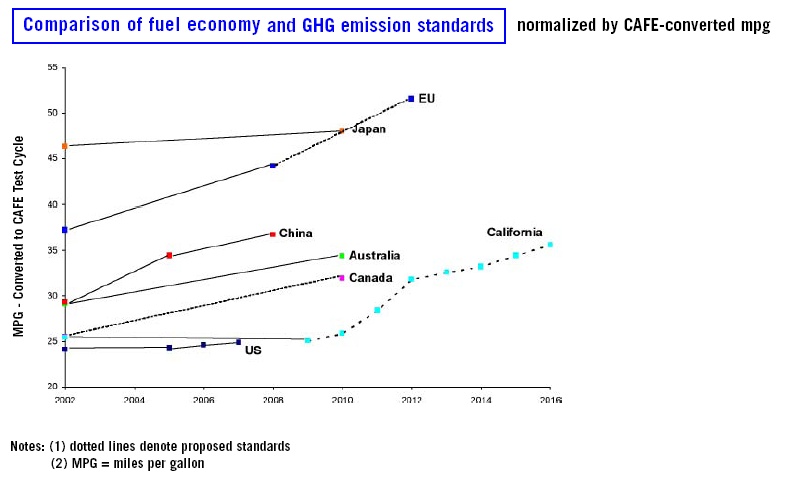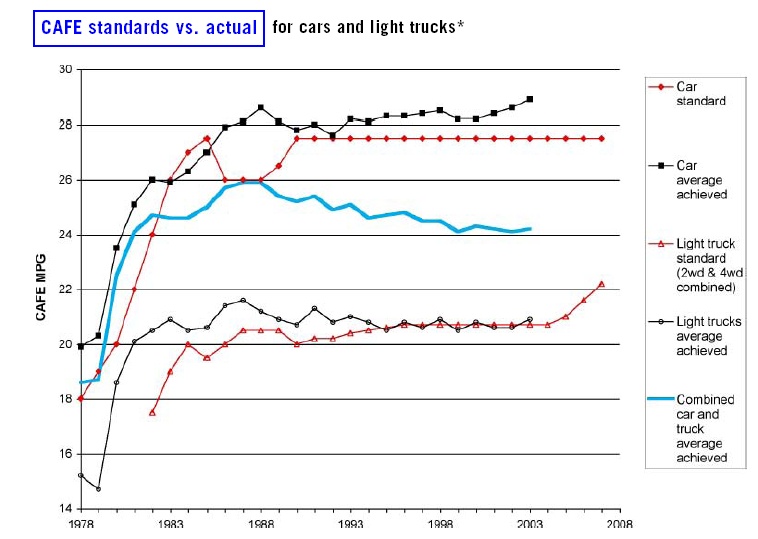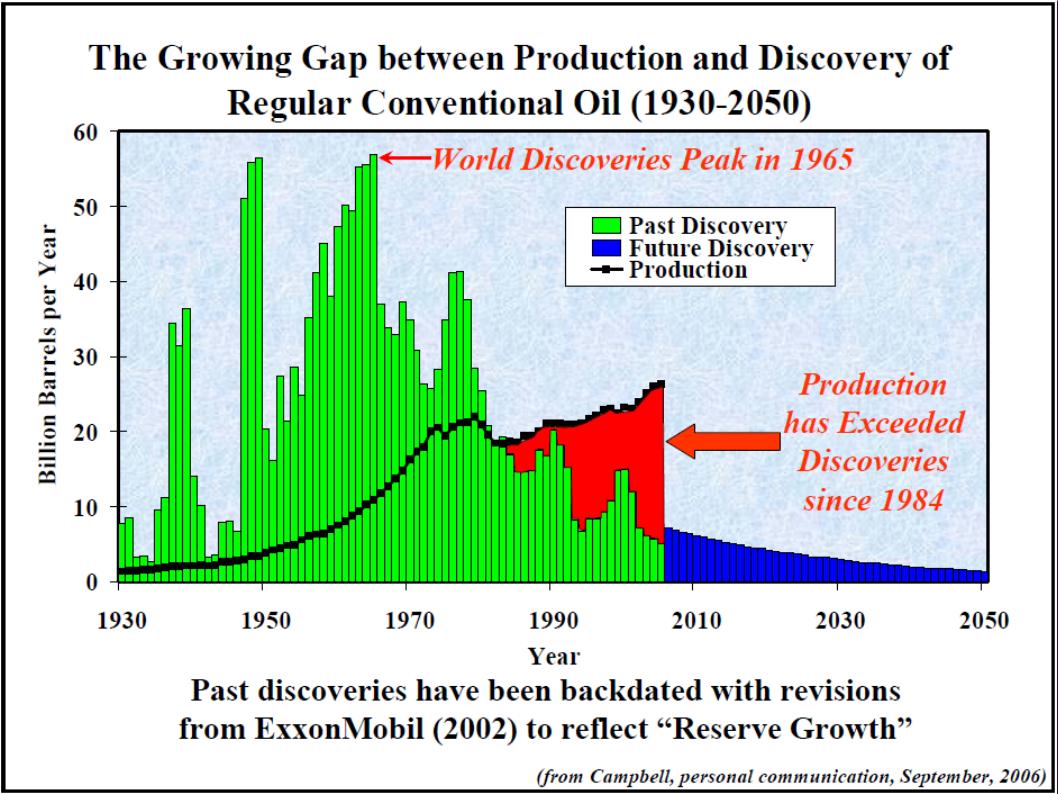EnergyPolicy
Direct link to this page: https://copswiki.org/Common/EnergyPolicySub-projects
| Topic | Description | Status | Parents |
|---|---|---|---|
| Climate Change | Investigation into the debate over anthropogenic climate change based on Greenhouse gasses. | Active | Energy Policy |
| Nuclear Energy | Nuclear Energy | Active | Energy Policy |
| Sunrise Powerlink | Project to oppose the installation of the Sunrise Powerlink | Closed | Energy Policy |
Is Drilling the Answer?
 It seems Big Oil can't get enough! Did you know that oil companies are already sitting on 68 million acres of leases that they aren't even drilling? Which kind of makes you wonder: Why are Big Oil and its allies suddenly desperate to get their hands on the last few places that are still protected -- our natural treasures, wildlife refuges, and pristine coastlines? They wouldn't use the concerns caused by high gas prices as an excuse to grab it ALL, would they? Thank you Speaker Pelosi for keeping a cool head and holding out for real solutions!
http://www.sierraclub.org/bigoil/map.asp
It seems Big Oil can't get enough! Did you know that oil companies are already sitting on 68 million acres of leases that they aren't even drilling? Which kind of makes you wonder: Why are Big Oil and its allies suddenly desperate to get their hands on the last few places that are still protected -- our natural treasures, wildlife refuges, and pristine coastlines? They wouldn't use the concerns caused by high gas prices as an excuse to grab it ALL, would they? Thank you Speaker Pelosi for keeping a cool head and holding out for real solutions!
http://www.sierraclub.org/bigoil/map.asp
Is ANWR the answer?
- Analysis of Crude Oil Production in the Arctic National Wildlife Refuge (May 2008) - http://www.eia.doe.gov/oiaf/servicerpt/anwr/pdf/sroiaf(2008)03.pdf
- projected to increase domestic crude oil production starting in 2018, estimated at reaches 780,000 barrels per day in 2027 and then declines to 710,000 barrels per day in 2030.
- Between 2018 and 2030, cumulative additional oil production is 2.6 billion barrels
- Decreases import dependency by 2% at the peak.
- Improves balance of trade $202 billion dollars (2006 dollars) in the mean oil resource case
- The opening of ANWR is projected to have its largest oil price reduction impacts as follows:
- a reduction in low-sulfur, light crude oil prices of $0.41 per barrel (2006 dollars) in 2026 for the low oil resource case,
- $0.75 per barrel in 2025 for the mean oil resource case, and
- $1.44 per barrel in 2027
- In 1998, the USGS estimated that between 5.7 and 16.0 billion barrels of technically recoverable oil are in the coastal plain area of ANWR.
- In comparison, the estimated volume of undiscovered, technically recoverable oil in the rest of the United States is about 120 billion barrels.
- Thus, ANWR represents about 10% of the oil reserves in the US.

-
-
projected ANWR oil production constitutes between 0.4 and 1.2 percent of total world oil consumption in 2030
-
Consequently, ANWR oil production is not projected to have a large impact on world oil prices, about $0.75 per barrel in 2025 in the mean oil resource case
-
The Organization of Petroleum Exporting Countries (OPEC) could neutralize any potential price impact of ANWR oil production by reducing its oil exports.
-
The fact is that we can almost immediately improve our situation by far more than 10% by taking low-efficiency vehicles off the road. Going from 20 mpg to 30 mpg is a 50% improvement. Even taking the average from 20 mpg to 22 mpg makes up for all the oil from ANWR, if indeed it would provide 10% of the supply, and it does it with the same balance of trade improvements (of course, it would be nice if the US automakers had some decent hybrids, which they actively killed, along with the EV-1 electric car to allow them to introduce the Hummer). By not buying the oil at all (or using up our precious and limited natural resources) we preserve the wealth of our economy and our nation. We can do far more, faster, by conserving, esp. since it will be 2018 before any ANWR oil comes on line. By conserving, more oil will remain on the market and then prices "should" fall. Of course, it also has the added benefit that we would be producing fewer emissions, and even for climate-change nay-sayers like yourself, I'm sure you can appreciate the idea that less pollution is better.
- the average fuel economy of the cars and trucks on the road is at a twenty-one year low!
- Automakers have the technology today to produce a fleet of cars and light trucks that averages 40 mpg. The modest increase in sticker prices will be more than offset by the fuel savings. On average, drivers will save more than $2,200 over the lifetime of the vehicle.
- Comparison of fuel economy standards:

"Automobile fuel economy standards have proven to be one of the most effective tools in controlling oil
demand and greenhouse gas (GHG) emissions from the transportation sector in many regions and countries around
the world. While fuel economy standards for light-duty vehicles have been largely stagnant in the United States over
the past two decades, the rest of the world-especially the European Union, Japan, and recently China and
California-has moved forward, establishing or tightening GHG or fuel economy standards."
- CAFE standards vs actual economy in US:

This is the crux of the problem. See that drooping blue line? That is the poor efficiency of our cars and trucks that has been the result of the popular mega-mammoth SUV sold in the US for the past 20 years. The two red lines represent CAFE standards for cars and light trucks respectively. The two black lines represent fleet-average fuel economy
achieved separately by cars and light trucks.
Drilling for oil in the Arctic National Wildlife Refuge and other special places would not curb our dependence on foreign oil.
- The U.S. holds only 3 percent of the world's oil reserves and uses 25 percent of the world's produced oil.
- Persian Gulf countries hold over 65 percent of the world's oil reserves.
- The total projected yield from the Arctic Refuge would increase world oil reserves by less than one-third of 1 percent.
- Opening the Arctic Refuge today would not produce oil until at least 2010 and, based on the current rate of consumption, would yield only a sixmonth supply of oil over 50 years. Phasing in a fleet wide fuel economy standard of 40 mpg by 2012 would save more oil in the next dozen years than the total projected yield from the Arctic Refuge.
- The Arctic Refuge would only reduce U.S. imports from 64 percent to 62 percent in 2020.
- Domestic oil production is expensive. While it costs deepwater drillers like Exxon Mobil or Conoco roughly $6 to $8 to produce a barrel in the Gulf of Mexico or the North Sea, producing oil in Saudi Arabia or Kuwait costs a fraction of that-$1 a barrel or less.
- Increasing domestic oil production would not protect the U.S. from price spikes because there are no regional markets for oil, only global. If world oil prices spike, so do domestic oil prices.
- Domestic oil infrastructure is itself vulnerable to terrorism, as illustrated by the effects of a single bullet shot into the trans-Alaska pipeline, which caused a spill of 6,800 barrels or 285,600 gallons of oil. A more concerted effort could easily disrupt domestic supplies and have serious economic impacts.
- Cars and light trucks account for 40 percent of U.S oil use-8 mbd.
- Raising fuel economy standards for new cars, SUVs and other light trucks to an average of 40 mpg over the next 10 years will save nearly 2 mbd in 2012 and nearly 4 mbd by the end of the next decade. This is more oil than current imports from the Persian Gulf and the projected yield from the Arctic Refuge, combined.
- Raising fuel economy standards for cars and light trucks to 40 mpg over the next decade would yield cumulative oil savings of 3 billion barrels by 2012 and more than 12 billion barrels by 2020.
http://www.sierraclub.org/globalwarming/cleancars/cafe/briefing_book.pdf
Market Speculation
Airline executives recently published a letter (attached) which makes the assertion that speculation is the root cause of our high prices today. They say:Twenty years ago, 21 percent of oil contracts were purchased by speculators who trade oil on paper with no intention ofFixing this broken market is the fastest, cheapest way to deal with the problem, with immediate returns to the economy.
ever taking delivery. Today, oil speculators purchase 66 percent of all oil futures contracts, and that reflects just the
transactions that are known. Speculators buy up large amounts of oil and then sell it to each other again and again. A
barrel of oil may trade 20-plus times before it is delivered and used; the price goes up with each trade and consumers pick
up the final tab. Some market experts estimate that current prices reflect as much as $30 to $60 per barrel in unnecessary
speculative costs.
Over seventy years ago, Congress established regulations to control excessive, largely unchecked market speculation
and manipulation. However, over the past two decades, these regulatory limits have been weakened or removed. We
believe that restoring and enforcing these limits, along with several other modest measures, will provide more disclosure,
transparency and sound market oversight. Together, these reforms will help cool the over-heated oil market and permit
the economy to prosper.
Conclusion
ANWR is an important wildlife refuge that should be preserved, esp. since we are currently at a 21-year low in terms of fleet efficiency. Conservation must be our first order of business. Developing ANWR without having completed a massive improvement in our conservation would be quite unethical, as the technology is available to improve our efficiency far more than 10%, and that is the same as the contribution by ANWR. The same argument is true for the coastal drilling proposals. Unfortunately, President Bush's plan completely neglected conservation as an element in our Energy Policy.Oil Supplies

Recent Articles and Media: (Add | All Media)
Number of topics: 119
< Previous Page 2 of 2
-
 (M757) 2009-03-17 Comments on SDG&E Fire Safety by Donna Tisdale -- Donna Tisdale, Citizens Oversight,
(M757) 2009-03-17 Comments on SDG&E Fire Safety by Donna Tisdale -- Donna Tisdale, Citizens Oversight,
-
 (M743) 2009-02-25 Lakeside Community Speaks out against Sunrise Powerlink In El Monte Valley -- Raymond Lutz, Citizens Oversight,
(M743) 2009-02-25 Lakeside Community Speaks out against Sunrise Powerlink In El Monte Valley -- Raymond Lutz, Citizens Oversight,
-
 (M1251) 2009-02-04 Nuclear station to get new towers of power -- M Icheal Burge, Union Tribune, Shows how new steam Generators were transported to the plant
(M1251) 2009-02-04 Nuclear station to get new towers of power -- M Icheal Burge, Union Tribune, Shows how new steam Generators were transported to the plant
-
 (M660) 2008-10-20 A Question of power -- Stop the Sunrise Powerlink -- Diane Conklin Donna Tisdale, Citizens Oversight, Very important description of the ridiculous Sunrise Powerlink
(M660) 2008-10-20 A Question of power -- Stop the Sunrise Powerlink -- Diane Conklin Donna Tisdale, Citizens Oversight, Very important description of the ridiculous Sunrise Powerlink
-
 (M658) 2008-10-13 Foreign Liquefied Natural Gas -- Amita Sharma Amy Isackson, Kpbs News,
(M658) 2008-10-13 Foreign Liquefied Natural Gas -- Amita Sharma Amy Isackson, Kpbs News,
-
 (M1586) 2008-09-24 Nuclear energy: assessing the emissions -- Kurt Kleiner, Nature.com,
(M1586) 2008-09-24 Nuclear energy: assessing the emissions -- Kurt Kleiner, Nature.com,
-
 (M622) 2008-08-25 Comment on Recirculated draft environmental impact report/supplemental draft environmental impact statement for the Sunrise powerlink transmission project -- Steven Siegel, Justin Augustine, Center For Biological Diversity & Sierra Club,
(M622) 2008-08-25 Comment on Recirculated draft environmental impact report/supplemental draft environmental impact statement for the Sunrise powerlink transmission project -- Steven Siegel, Justin Augustine, Center For Biological Diversity & Sierra Club,
-
 (M621) 2008-08-04 Contribution to the Recirculated Draft EIR for the Sunrise Powerlink (regarding the RWEP) (Lutz) -- Raymond Lutz, Citizens Oversight, [Proves that claims of 1250 MW is not feasible in 7500 acre area proposed.]
(M621) 2008-08-04 Contribution to the Recirculated Draft EIR for the Sunrise Powerlink (regarding the RWEP) (Lutz) -- Raymond Lutz, Citizens Oversight, [Proves that claims of 1250 MW is not feasible in 7500 acre area proposed.]
-
 (M566) 2008-07-08 San Diego City Attorney's INTERIM REPORT NO. 32: CALIFORNIA’S RENEWABLE ENERGY MANDATE IN PERIL -- Michael Aguirre, San Diego City Attorney,
(M566) 2008-07-08 San Diego City Attorney's INTERIM REPORT NO. 32: CALIFORNIA’S RENEWABLE ENERGY MANDATE IN PERIL -- Michael Aguirre, San Diego City Attorney,
-

 (M1424) 2008 AB 1632 ASSESSMENT OF CALIFORNIA’S OPERATING NUCLEAR PLANTS -- , California Energy Commission, Shutdown Diablo
(M1424) 2008 AB 1632 ASSESSMENT OF CALIFORNIA’S OPERATING NUCLEAR PLANTS -- , California Energy Commission, Shutdown Diablo
-
 (M1791) 2008 America's Nuclear Wastelands -- Politics, Accountability, and Cleanup -- Max Power, Washington State University Press,
(M1791) 2008 America's Nuclear Wastelands -- Politics, Accountability, and Cleanup -- Max Power, Washington State University Press,
-
 (M719) 2007-12-20 The American Denial of Global Warming -- Naomi Oreskes, Ph.D., Ucsd Tv, Important encapsulation of Global Warming issue and the plan to undermine it.
(M719) 2007-12-20 The American Denial of Global Warming -- Naomi Oreskes, Ph.D., Ucsd Tv, Important encapsulation of Global Warming issue and the plan to undermine it.
-
 (M657) 2007-09-24 Biofuels: The Science of Creating Greener Energy -- , Ucsd Tv Molecules For The Media,
(M657) 2007-09-24 Biofuels: The Science of Creating Greener Energy -- , Ucsd Tv Molecules For The Media,
- (M677) 2007-07-15 Cadem Resolution: Support Clean Energy -- Dante Atkins, delegate, 42nd Assembly District, Andrew Lachman; Democrats for Israel Los Angeles, Cadem Resolutions Committee,
- (M678) 2007-07-15 Cadem Resolution: Opposing Coal Liquefaction -- Dante Atkins, DSCC Member, AD-42, and Platform Committee Member, Cadem Resolutions Committee,
- (M680) 2007-07-15 Cadem Resolution: Local Planning to End Global Warming -- Luke Breit, Chair, CDP Environmental Caucus, Cadem Resolutions Committee,
-
 (GreatGlobalWarmingSwindle) Great Global Warming Swindle -- Martin Durkin, Martin Durkin,
(GreatGlobalWarmingSwindle) Great Global Warming Swindle -- Martin Durkin, Martin Durkin,
-
 (M1239) Dr. John Gofman comments on nuclear energy -- , Citizens Oversight,
(M1239) Dr. John Gofman comments on nuclear energy -- , Citizens Oversight,
-
 (M1353) Public Utilities Code Section 455.5 -- , State Of California,
(M1353) Public Utilities Code Section 455.5 -- , State Of California,
< Previous Page 2 of 2
< Previous Page 2 of 2
Comments
Project Form edit
| Project Name | Energy Policy |
| Project Description | Consideration of various approaches to solving fossil fuel addiction. |
| Project Founder | Raymond Lutz |
| Project Curator | Raymond Lutz |
| Project Type | Issue Oversight |
| Project Parents | |
| Related Keywords | |
| Project Status | Active |
| Thumbnail Link | |
| Forum Link | |
| List Serve Topic |
| I | Attachment | Action | Size | Date | Who | Comment |
|---|---|---|---|---|---|---|
| |
An_Open_letter_to_All_Airline_Customers_Stop_Oil_Speculation.pdf | manage | 90 K | 26 Jun 2014 - 21:23 | Raymond Lutz | An Open letter to All Airline Customers -- Stop Oil Speculation |
| |
CAFE_standards_vs_actual_economy_in_US.jpg | manage | 92 K | 26 Jun 2014 - 21:23 | Raymond Lutz | CAFE standards vs actual economy in US |
| |
Comparison_of_fuel_economy_standards.jpg | manage | 64 K | 26 Jun 2014 - 21:23 | Raymond Lutz | Comparison of fuel economy standards |
| |
Domestic_Crude_Oil_Production_for_the_AEO2008_Reference_case_and_three_ANWR_resource_cases.jpg | manage | 112 K | 26 Jun 2014 - 21:23 | Raymond Lutz | Domestic Crude Oil Production for the AEO2008 Reference case and three ANWR resource cases |
| |
DrillingAreas2008-08-19.jpg | manage | 79 K | 26 Jun 2014 - 21:23 | Raymond Lutz | oil companies are already sitting on 68 million acres of leases that they aren't even drilling |
| |
OilProductionExceedsDiscoveriesSince1984.jpg | manage | 125 K | 26 Jun 2014 - 21:23 | Raymond Lutz |
 Copyright © by the contributing authors. All material on this collaboration platform is the property of the contributing authors.
Copyright © by the contributing authors. All material on this collaboration platform is the property of the contributing authors. Ideas, requests, problems regarding Cops? Send feedback


